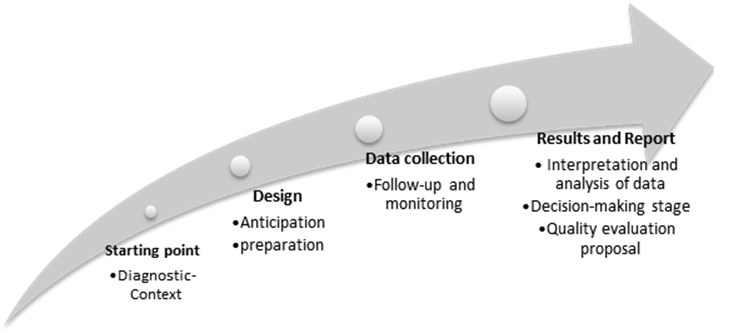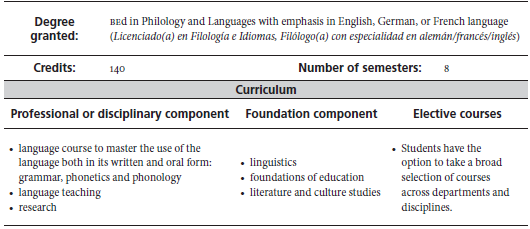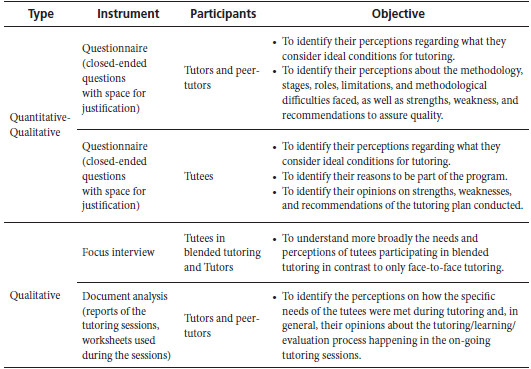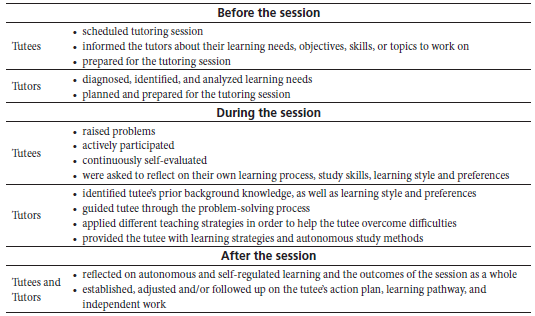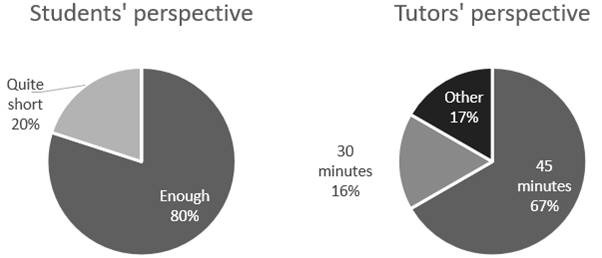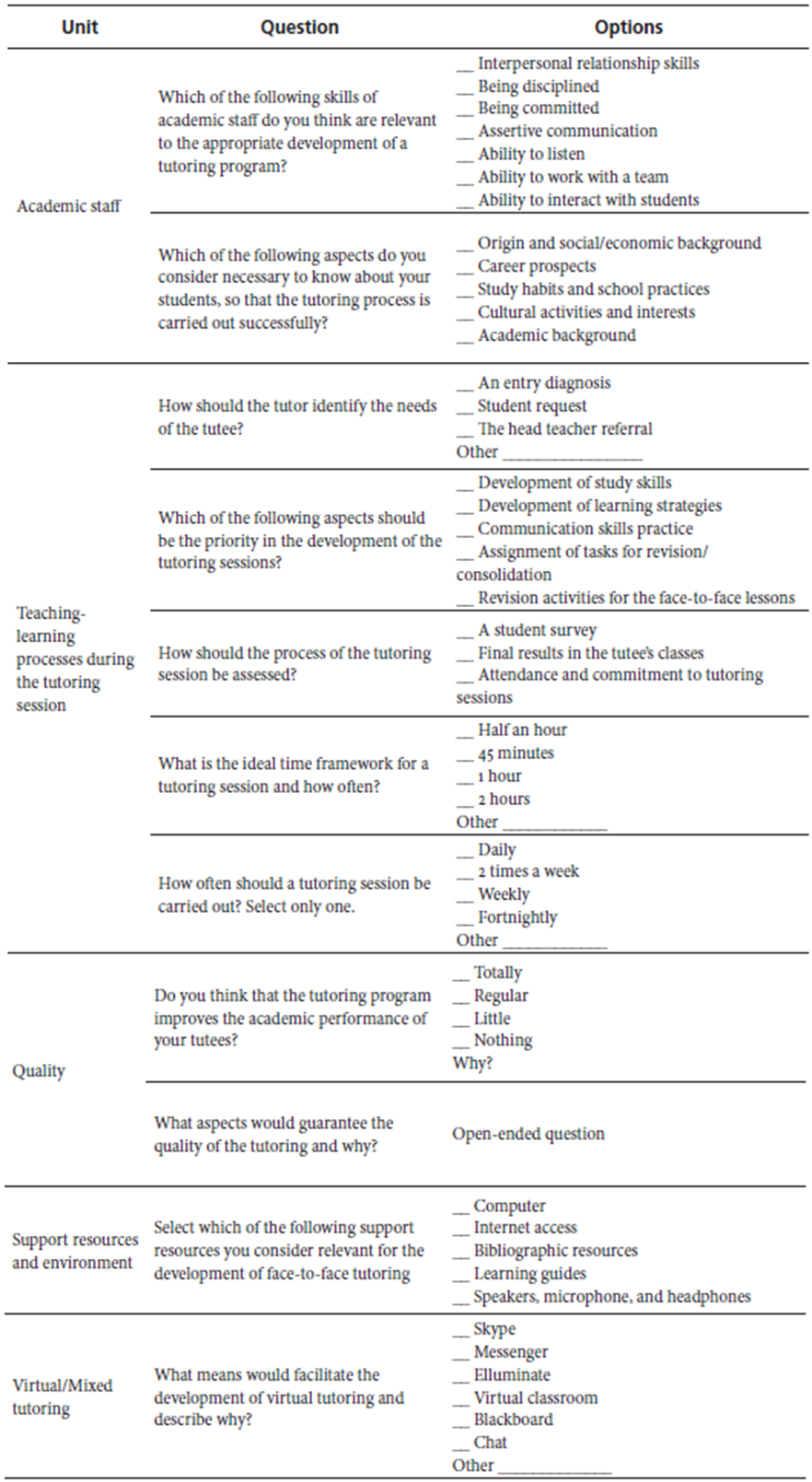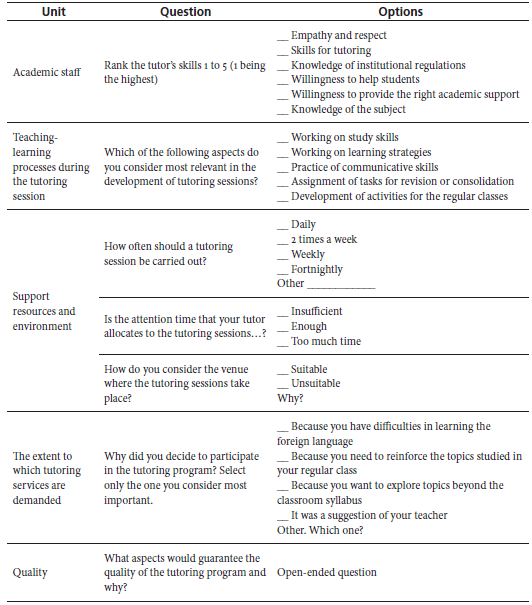Introduction
Quality assurance and pertinence represent leading challenges to higher education, mainly because, to a great extent, they both define universities’ direct and measurable contribution to society. In Colombia, and particularly, in the Foreign Languages Department of Universidad Nacional de Colombia, a specific concern was revealed as to how the education community could assure that all its students were given equal opportunities and support to attain academic success (Nieto et al., 2013) so that they would become excellent professionals and agents of change and growth in their community, regardless of their ethnic, racial, or socioeconomic status. According to King (2006), inequity continues to be present where minority education is concerned if compared to that of the majority or more privileged population.
The Universidad Nacional de Colombia has endeavored to alleviate the barriers experienced by ethnic/racial minorities, particularly those students of lower socio-economic status, by providing high quality education at a very low cost. However, diverse factors affect students’ performance, learning process and confidence in higher education, including their age when starting higher education, the economic situation, having to move and live on their own in a bigger city, and prior academic background, to name just a few. Reportedly, some students get frustrated or even give up for not being ready to cope with the high-demanding academic requirements.
In 2005, the University established a follow-up and support system for students which indicated that a fixed schedule was to be set for timely academic tutoring and early support of students (Agreement No. 016, 2005, Article 26). This action, however, was being quite modestly implemented at the time (Nieto et al., 2013).
This need to provide further academic support for students in the Foreign Languages Department of Universidad Nacional de Colombia was also revealed with the case study conducted by Velandia (2007) that dealt with a low-performance student, and which proved the benefits of an accompanying, monitoring, and tutoring plan. The student-subject in Velandia’s study, who belonged to the Inga indigenous group of Putumayo (a region in the southwest of Colombia), progressively showed more self-regulation and reflection regarding his own learning process after his active participation in face-to-face tutoring sessions. The benefits of tutoring were evident as his performance and self-confidence in the English class improved notably.
Another successful experience of tutoring in the context of a public university was reported by Viáfara and Ariza (2008) who, after implementing peer-tutoring as part of an action research study, outlined basic principles in peer-tutoring, described the profile of the student-tutor, and proposed a model for the tutoring process.
The need for a tutoring plan addressed to the philology and languages students majoring in English and French teaching programs at Universidad Nacional de Colombia was manifest. As a result, the LEXI research group1 strived to understand the perceptions of teachers and students about the role of academic tutoring in foreign language learning as well as to identify the conditions for its implementation and success through a pilot tutoring program (Nieto et al., 2013).
On the bases of the works mentioned above, the study reported here focused on one of the questions that arose from the preliminary reflections and discussions with the members of the LEXI research group regarding quality assurance methods in tutoring programs for foreign language students. This encouraged the need for identifying the epistemological and methodological guidelines that would allow a systematic follow-up of the achievements and shortcomings of tutoring in this specific context and with the objective of designing an index of quality indicators.
The main objective of the research was to design an internal quality evaluation model for the pilot tutoring program offered for students of the BEd in Philology and Languages with an emphasis in English and French in Universidad Nacional de Colombia’s Foreign Languages Department. This occurred in order to identify the program’s strengths and areas of improvement. The following are the specific objectives:
To identify the essential epistemological and methodological criteria to conduct quality tutoring in the BEd program.
To describe and analyze the needs of a quality evaluation system for a tutoring plan from the perspective of the educators and the students, as the starting point to prepare a proposal of indicators for the tutoring plan.
Literature Review
This study was based on two main theoretical constructs: academic tutoring and quality evaluation.
Academic Tutoring
Tutoring has proven to be an effective educational strategy to follow up on and accompany low-performance students, whether to strengthen their knowledge, clarify study topics, to foster autonomy or help improve their attitude towards the subject studied (Cohen et al., 1982). It allows educators to provide a comprehensive educational process, as well as to foster the development of learners’ communicative abilities. All in all, its aim is to boost students’ capabilities and to overcome any weakness that may have arisen during their learning processes (Comité Coordinador de Tutores, 2005). Tutoring has been encouraged in higher education institutions in order to foster learning and to reduce dropout (Cohen et al., 1982).
Several researchers have already reported the learning gains and, in many cases, the affective growth of students who have participated actively in tutoring. In Colombia, Chiriví and Jiménez (1995) showed how face-to-face tutoring benefitted a group of at-risk high school students in their learning of English. Similarly, the case study by Medina (2009) reported the different dynamics that took place in a virtual English program offered to students of a public university in Colombia and how the online tutoring sections interactions differed from traditional face-to-face English as a foreign language (EFL) classes.
Similarly, Viáfara and Ariza (2008) gave an account of principles for peer tutoring and proposed a model for implementation with students of a foreign languages teaching program of a public university in Colombia. The aim was to support students to improve communicative competence in L2, starting from the understanding of these students and their professors’ beliefs about tutoring and autonomous learning.
Research indicates tutoring is an effective means to provide an individualized, systematic, structured learning experience. It facilitates ethnic and racial integration, which results as well in better attitudes towards the subject area, as well as personal and academic growth (Beasley, 1997). Tutoring practice is claimed to have immediate cognitive gains that include “improved retention, greater meta-cognitive awareness and better application of knowledge and skills to new situations” (Topping, 1996, p. 325), in addition to the immense benefits it has in the increase of autonomy, self-regulation, self-confidence, and motivation (Schunk, 1985 as cited in Topping, 1996).
Tutoring programs also vary in the types of tutors: same‐age or older peers, regular teachers, or professional tutors. Peer-tutoring includes individuals of the same societal group supporting or guiding one another when one peer has more expertise or knowledge than the others (Colvin, 2007; Topping, 1996; Viáfara & Ariza, 2008). Supplemental instruction can be done online or face-to-face, as well as conducted one on one or in small groups (Cohen et al., 1982).
Regarding the expected profile of a tutor, Álvarez González et al. (2004) identify key knowledge he or she should have:
knowing the subject
knowing how to apply it
knowing how to interact (having social competences)
knowing how to be (attitudes and personal and participative behaviors)
In the typology of peer-tutoring, Topping (1996) proposed 10 dimensions, six of which are relevant to the present study:
1. Curriculum Content - which may be knowledge or skills orientated, or a combination . . .
6. Place . . .
7. Time - peer tutoring may be scheduled in regular class contact time, outside class, or in a combination of both . . .
8. Tutee Characteristics - [tutoring] may be [available] for all students or a targeted subgroup, e.g., the especially able or gifted; those considered at risk of under-achievement, failure or dropout; and those from ethnic, religious, and other minorities.
9. Tutor Characteristics . . .
10. Objectives - [tutoring] may target . . . formal academic achievement, affective and attitudinal gains, social and emotional gains, self-image and self-concept gains, or any combination. (pp. 322-323)
Quality Evaluation
Ordúz (2012) describes evaluation as “a permanent and continuous process of identification of strengths and weaknesses . . . to improve the services offered to its users . . . which must prove effective in terms of results” (p. 2, my translation). This means that the achievement of the learning objectives and the success in students’ change of attitudes shall be considered as the ultimate target of the evaluation of the teaching process. Evaluating is, therefore and generally speaking, obtaining duly documented pieces of evidence upon which institutions will make decisions. Observation and data from varied sources should result in improved action plans (Evans & Lindsay, 2007).
Quality evaluation ultimately aims at the recognition of educational achievement and its contribution to the outcomes of teaching and learning. The quality assurance processes are acquiring more and more relevance in the current world. Tejedor (2003), with the purpose of describing the advantages of an evaluation system, states that the strategic function of such a process requires the data collected to lead to change and improved policies, as well as to identify and follow up learners’ performances. This continuous improvement cycle strengthens the commitment of institutions to comply with standards and systematically evaluate their school curriculums and practices.
Also, the responsible management of human capital and information increases quality and demands a self-evaluation culture in the education and foreign language and teaching field (Kennedy, 1988; Rea Dickins & Germaine, 1998). Evaluation is expected to have immediate impact on policy making and great influence in short- and long-term decision making (Rea Dickins & Germaine, 1998). From this perspective, all the participants must be involved in the learning and continuous improvement cycle (Lynch, 2001). Ensuring quality is evidently a continuous evaluation and self-evaluation process, a widely used approach is the Deming Cycle (or Plan-Do-Check-Act cycle) which is depicted in Figure 1.
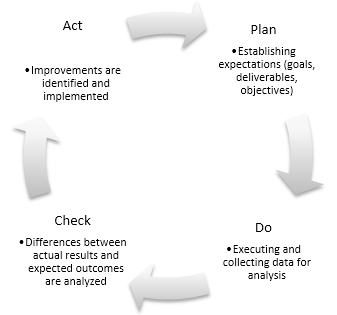
Note: Adapted from La Mejora Continua y la Calidad en Instituciones de Formación Profesional: El Proceso de Enseñanza-Aprendizaje (p. 30) by A. J. Garzón Castrillón, 2012, [Doctoral dissertation, Universitat Autònoma de Barcelona, Spain]. Tesis Doctorals en Xarxa. (http://hdl.handle.net/10803/96828). Copyright 2012 by A. J. Garzón Castrillón.
Figure 1 Deming Cycle for the Evaluation of Education Programs
The self-assessment continuous cycle is a key part of the quality assurance programs as it focuses on identifying, responding to, and meeting learner and school needs, assessing the effectiveness of organizational and educative practices, and using the understanding attained to make real, meaningful improvements, ultimately increasing learner achievement.
Evaluation in applied linguistics and English language teaching (ELT) as defined by Lynch (1996) “is a systematic attempt to gather information in order to make judgments or decisions” (p. 2). This information can be collected by qualitative or quantitative means, or a mix of both through a positivistic and naturalistic paradigm. An ELT program evaluation is meant to be flexible, context-adaptive, and heuristic (Lynch, 2001); this is known as a context-adaptive model (CAM) for language program evaluation as can be seen in Figure 2 that summarizes the stages of program evaluation proposed for the teaching of a foreign language and applied linguistics field.

Note: Adapted from “A Context-Adaptive Model for Program Evaluation,” by B. K. Lynch, 1990, TESOL Quarterly, 24(1), p. 25 (https://doi.org/10.2307/3586850). Copyright 1990 by TESOL Quarterly.
Figure 2 Context-Adaptive Model for Language Program Evaluation
The key factors that, according to Lynch (1990, 2001), must be considered are firstly, the identification of goals, audience, and the role of the evaluator. This is done to establish the pertinence of internal or external evaluation, which in turn determines if the evaluator performs as a consultant, collaborator, judge, or decision-making facilitator.
Once this is established, then a context inventory is done in which the background of the program is comprehended (students, measures, timing, characteristics of the program, size and intensity, and resources, among others). The following stages include collecting data (by means of observation, interviews, tests, etc.), analyzing, interpreting, and reporting the evaluation findings. Finally, depending on the results found, an action plan can be established.
Research Design
Regarding the design and method, the inquiry about the epistemological and methodological conditions for a tutoring program offered to low-performance undergraduate students of an initial teaching program, required putting the process under consideration from several angles. In order to meet the expectations, a pilot tutoring program was launched. Interested students took part in continuous tutoring sessions with experienced teachers or peer-tutors for a period of approximately three months. During this intervention, the tutors and tutees identified their perceptions, opinions, and preferences with regard to the tutoring process; this was done through focus group interviews, document analysis, and questionnaires.
This study used the quantitative-qualitative, or mixed, approach because it provides more comprehensive evidence for studying a research question than either quantitative or qualitative research only (Creswell, 2003; Lynch, 2001). Likewise, this research was framed within the parameters of an exploratory analysis that, according to the classification made by González (2005), shall formulate hypotheses, theories, and consequential studies on the part of other researches interested in this type of quality systems. This paper is, therefore, a setting for those interested in the reflection and current debate about quality issues in foreign language tutoring to be further explored.
Similarly, in line with the approaches of Hernández et al. (2006), a nonexperimental and transversal approach was implemented as this study did not intend to predispose or manipulate research variables. Besides that, it was being carried out in a unique point in time. Figure 3 shows the overview of the stages of the pilot tutoring program based on Lynch’s (1990) context-adaptive model.
Context and Participants
The study was carried out in 2012 in the Department of Foreign Languages of Universidad Nacional de Colombia at its Bogota campus, a public, state, and research university with the largest number of curricular programs in the country. The Universidad Nacional’s philology and languages program places special emphasis on teaching, linguistics, translation, and literature. Table 1 depicts an overview of the program.
The student support system (sistema de acompañamiento estudiantil) established by the University required professors to devote time to provide early support or follow-up to students who needed it. However, its implementation was not necessarily rigorous or systematic. This action, as mentioned before, evidenced the need for a set of guidelines to implement the tutoring sessions in order to assure greater accountability and achievement.
Tutees
Thirty students voluntarily decided to be part of the tutoring plan for two reasons mainly: 63% felt they needed to clarify and consolidate what was studied in class and 37% indicated they had difficulties learning the foreign language. They attended the sessions on a regular basis, but only 10 of them are part of the sample group of tutees in this research as they consented to be part of the present study by completing and submitting a questionnaire or were part of the focus group interview. Two students in the group of the tutees participated in the blended tutoring, which means that half of the sessions they attended were face-to-face meetings and the rest were online meetings through virtual classrooms (Elluminate) or other online platforms (Skype).
The group of tutees included a male student and nine female students from the Bed program in philology and languages; six students were currently enrolled in the English major and four in the French one. Their ages ranged from 17 to 20 and they were mostly in their third and sixth semester of the program.
Four of the tutees lived with their parents and the remaining came from different cities and lived in residences or rented rooms. Eight of them manifested obtaining low grades in their language class or having failed the course; the other two students were interested in improving and consolidating learning.
Tutors
Senior English and French language teachers and student monitors of the same curricular programs expressed interest in participating in this pilot tutoring plan. Six tutors made up the sample group for this study as they agreed to share their perception about the tutoring program and allowed the researcher to analyze the information recorded in the tutoring session report forms. Three tutors were from the English philology program and three from the French one. Two of them were senior language teachers (tutors) and four were student-monitors (peer-tutors), who were selected for their high academic performance, motivation, and high proficiency in English or French.
My Role in the Study
I took part as an external tutor and researcher as I had worked before as an EFL teacher and language tutor. My role was that of a participant-observer as I was delivering tutoring sessions while collaborating with a larger research about this pilot program carried out by the LEXI research group (Nieto et al., 2013).
Ethical Issues
In relation to the ethical issues, a written informed consent form with relevant factual information pertaining to the study’s aims, background, and procedures was signed by each of the participants of the study. This was done in order to allow them to make an informed decision whether or not to participate in the study. Also, their identity remained confidential in all cases.
Data Collection
As the pilot tutoring program was completed, the individuals involved were asked to provide information about their perceptions regarding strengths, weaknesses, and opportunities of the tutoring sections attended. This was done through online questionnaires (see Appendices A and B) and focus groups; at the same time, a review of documents was conducted. The analysis of this data gathered included the coding and categorizing of information contained in the tutoring session reports and worksheets filled out after the completion of each tutoring session.
The results of the questionnaires answered by tutors and students were crossed with the answers provided in the focused-group interviews and the information provided in the documents (Burns, 1999; Topping, 1996). Table 2 presents a brief account of the different research tools that were used in the study to validate the findings.
Data Analysis
Coding and preliminary understanding of data was the next step. The most relevant concepts and their characteristics, occurrences, and dimensions were identified at this stage. Pursuant to the guidelines described by Strauss and Corbin (1990), data were fragmented, examined in detail, and compared in order to find differences and similarities; this with the objective of classifying and grouping data into explicit categories. This allowed the identification of two main research categories: the Preparation Stage and the Reflection and Evaluation Stage. The former was divided into three subcategories: (1) Human Resources, (2) Learning Environment, (3) Blended Tutoring, and the latter that includes (4) Quality and Results. Triangulation was also used in order to ensure and evaluate the validity of the data in line with the approach by Burns (1999). The analysis of the results started with the organization and classification of the collected data (Lozoya, 2010).
Pedagogical Intervention
Over 30 tutoring sessions were carried out in a semester. The tutoring sessions did not follow a strict, rigorous structure as the objective was to explore suitable approaches in order to meet the individual needs of the tutees. However, in most cases before the tutoring session, the tutees were asked to schedule the meeting in advance and inform the topic, objective, or skills they were to work on so that the tutors or peer-tutors could better prepare themselves for the session (Scharle & Szabó, 2000; Topping, 1996).
The first session started with a diagnostic exercise so as to get familiar with the strengths, weaknesses, and opportunities of the students’ learning process, their prior background knowledge, as well as learning style and preferences. After that, a learning pathway and/or action plan was established by the tutees with the guidance of the tutors (Álvarez González et al., 2004).
The content, objectives, and logistics of each tutoring session were negotiated with each tutee and always aimed at meeting the needs of individual students (Gaustad, 1993; Scharle & Szabó, 2000). The periodicity, time, and place, for instance, were arranged with the student and, as in all cases, this depended on the specific learning needs and objectives of the tutee. The topics and skills worked on during the sessions were also very diverse; they ranged from academic writing and grammar and vocabulary practice to oral discourse strategies or oral presentation strategies.
After the tutoring session was carried out, the tutor and tutee were asked to reflect on autonomous and self-regulated learning and the outcomes of the session as a whole (Scharle & Szabó, 2000). The main objective of the tutoring sessions was always to give the tutees the tools to be independent, diligent, and active language learners; for this reason, aspects like autonomous learning, metacognitive awareness, and transferrable skills were emphasized in this tutoring report form.
During the last tutoring session, the tutees were invited to answer the questionnaire and, if it applied, they also participated in the focus group interview. On average, seven tutoring sessions were delivered per tutee. Table 3 depicts a summary of the pedagogical intervention.
Results and Discussion
Table 4 shows the categories that emerged from the analysis of data. The codes and subsequent categories established derived from relevant research findings and the underlying conceptualization bearing in mind the research question (Hernandez et al., 2006).
What Does It Take to Do Tutoring? The Preparation Stage
The first category grouped a number of planning and preparation aspects that, from the perspective of the tutees and tutors, allowed the tutoring to be carried out in the best way possible. In a nutshell, these are the aspects that must be taken into account to initiate and execute a tutoring program.
This category included what has to do with (a) the human resources (profile, objectives of the tutoring session, role, as well as expected skills and characteristics; Topping, 1996); (b) the learning environment (logistics, venue, equipment, resources, time and duration, etc.); and (c) blended tutoring (the particular implications of this type of tutoring).
Human Resources
The first subcategory of analysis evidenced primary aspects related to the planning or preparation stage. Firstly, what has to do with the tutor’s toolbox in terms of skills, competences, training, and characteristics.
The tutoring report forms showed that a tutor should be knowledgeable, empathetic, respectful, and patient with the students. For 83.33% of the tutors it is vital that they are disciplined, committed, and good communicators (Gaustad, 1993; Topping, 1996).
Apart from this, tutees valued that the tutors could clarify, explain, and support them academically, whether or not the session was conducted by a senior teacher or peer-tutor. Topping (1996) warns that the quality of tutoring from a peer-tutor might be a “great deal inferior to that from a professional teacher (although this should not be assumed), and the need for monitoring and quality control cannot be overstated” (p. 325). Here are some excerpts from the participants:2
[A tutor must be] a knowledgeable teacher, an educator, who has the time and attitude to do it [tutoring], that has an exceptional academic background, is up-to-date and good at communicating. (Questionnaire, Senior Tutor)
A tutor must have ample knowledge of the subject, and ability to share it. (Questionnaire, Tutee)
The tutors and tutees agreed and highlighted reiteratively that tutors need to be able to increase self-confidence and autonomous learning (Scharle & Szabó, 2000). Despite autonomy being sometimes regarded as a complementary benefit and even achieved unintentionally, it is a very valuable aspect of tutoring.
Working on learning strategies helps the tutees to feel supported, more confident in their class and with the topics. (Tutoring Record Form, Tutor)
It is to highlight the [tutor’s] desire to provide support, because this reduces the [student’s] fear to speak up, debate, and increases self-esteem. (Tutoring record form, Tutee)
[That tutoring] ultimately gives [the tutee] support, self-assurance, and confidence for when they have to face an exam situation and oral presentation, etc. (Tutoring record form, Senior Tutor)
The tutoring sessions were also characterized by adapting to students’ pace and learning style in accordance with Gaustad’s (1993) remarks, as a student and a tutor explained:
I was able to understand topics that I couldn’t understand in class because the professor explains too fast. (Focus interview, Tutee)
To identify learning styles so that the students can take advantage of their face-to-face classes as well as their tutoring. (Questionnaire, Tutor)
The possibilities regarding the role of the tutor (Cohen et al., 1982; Torrecilla et al., 2013) ranged from being a counselor who builds a relationship based on affection and trust, to a facilitator who provides learning strategies and study skills-for instance, effective time management, writing, and note-taking skills-to an academic tutor who, more than anything, helps consolidate or revise language and content. In the study, tutees referred positively to their tutors as they devoted time to clarify relevant topics at the same time as they identified and corrected students’ mistakes.
Someone who takes the time to correct your mistakes is very important, in this way you can practice and improve your language competences to a great extent. (Questionnaire, Tutee)
It is true that there is a time limitation, but I felt as a free tutor, I thought…oh I can take advantage of this opportunity and teach the tutee this here (now). (Focus interview, Tutor)
Learning gaps and difficulties are identified, we sometimes take for granted that the students have understood the topic, but in fact they still have doubts. (Questionnaire, Tutor)
From the literature review it is known there are different styles to tutoring i.e. some tutors focus on the subject area or doubts, others plan carefully every stage of their tutoring session, while others prefer to be flexible and make decisions as the tutoring unfolds. However, what is desirable is that tutoring is a space for human and professional development, for mutual communication that allows the recognition of academic gaps, students’ interests, beliefs, values and ultimately prepares the student to become a better learner and professional (Álvarez González et al., 2004; Gaustad, 1993).
Learning Environment
This subcategory has to do with the organizational side of tutoring, particularly with the length, venue, periodicity, and other bibliographical and technological resources available for the tutoring sessions.
According to the ideal periodicity for the tutoring session (see Figure 4), the tutors and tutees agreed that rather than having a fixed schedule-as it is a personalized process-it was better to come to a specific agreement to every student’s needs and teacher’s availability (Colvin, 2007). In accordance with Cohen et al.’s (1982) findings, less than half the students (40%) being tutored in this pilot indicated that they would prefer to attend tutoring once or twice a week, which shows they felt they had a greater need for tutoring than the one that was being offered to them. However, as for the duration of the sessions, only 20% of the tutees felt the time was not enough. Each session usually ranged from 20 to 45 minutes.
Regarding timing, tutors expressed that they were often very busy with the university workload which makes it difficult to fully dedicate themselves to tutoring for a longer period of time and/or offer more frequent availability for tutoring.
About physical space for the tutoring sessions, tutees’ views show that it is necessary to conduct face-to-face tutoring in a place different from the teacher’s office; this is because, as they expressed, it was not always the most appropriate venue.
It is not very comfortable, it sometimes felt like the teacher was in a hurry, with so much noise and other people interrupting as well. (Questionnaire, Tutee)
Maybe it would be too much to ask, but an exclusive place for tutoring where we can focus and concentrate should be available. (Focus interview, Tutee)
When the tutoring was conducted in the resource center it was evident that the tutors valued the fact that it was easy to have access to books and learning guides, and other technological tools like internet, headphones, and computers.
Blended Tutoring Sessions
Skype and Elluminate were the most frequently used online platforms for this type of tutoring. The students who participated in the focus group favored the latter since it offered more options (e.g., screen, audios, and file sharing, as well as simultaneous video/audio conferencing). The tutors similarly expressed their preference for this tool over Skype; nevertheless, they also mentioned that its use for tutoring “requires previous training and a payment” (Tutoring record form, Tutor).
In the document review analysis, it was found that there were technical issues in 30% of the virtual tutoring sessions, including aspects such as internet connection, availability of power supply, or simply the access to technological tools that would allow smoother synchronic communication (e.g., having good quality microphones and earphones and stable internet connection). In this regard, a tutor stated that:
Although the online tutoring sessions were more convenient, this type of tutoring has the problem that it depends on too many factors-for example internet connection-and those things are often beyond the tutor’s as well as the student’s control. (Tutoring record form, Tutor)
These findings relate to what Álvarez González et al. (2004) highlighted with regard to the necessity of a suitable space and time, appropriate resources, and a fixed schedule besides considering the aspects of remuneration and specific training for tutors or/and peer-tutors. Particularly important was the evaluation of the processes and outcomes in order to identify specific gaps and needs at an early stage.
Attaining Quality: The Reflection and Evaluation Stage
The second category includes aspects regarding the impact and outcomes of the tutoring sessions, that is, those which helped to determine their quality, areas of improvement, and continuous evaluation process. In this category, the perspectives from both the tutors and the tutees were collected as to identify what should be taken into account to prepare a set of quality indicators for the tutorial plan. This was done through postintervention questionnaires and focused-group interviews, instruments that would more accurately evidence the success and impact of tutoring on student’s L2 learning practices.
Generally speaking, the students who participated in the tutoring sessions agreed that tutoring was quite beneficial, because it either provided complementary support or revision of topics covered in the class that were not clear, as a student commented:
Today the tutor helped me understand linking words in essays; that was very useful. (Tutoring record form, Tutee)
As evidenced in the literature as well (Beasley, 1997; Medina, 2009; Topping, 1996), tutoring and peer-tutoring enhance the academic development of students. Furthermore, the interaction that occurs between tutor and tutees can stimulate cognitive growth and, in turn, result in more understanding and retention of information studied earlier.
Half of the tutors highlighted the importance of communicating with the head teacher in order to follow and monitor students’ performances and perhaps to identify a change in attitude, perceptions, or commitment in class or a visible impact on their learning process. Tutors also valued their grades and self-evaluation as a more reliable source of information, as opposed to a formal summative evaluation.
The participation in tutoring should not have a grade because this is a personal/autonomous choice, every individual should self-evaluate. (Questionnaire, Tutor)
Self-evaluation tools can be implemented. The goal is to achieve autonomy, more autonomous learners who know themselves better. (Questionnaire, Tutor)
I don’t see why to intrude and impose yet another evaluation [from tutors]. (Questionnaire, Tutor)
Similarly, as was evidenced in Álvarez González et al. (2004), remuneration and time availability for tutoring represent vital aspects to assure its quality. Professors often have difficulties devoting time for tutoring because of the various academic duties they are already responsible for. As some tutors indicated:
Not having a fixed time for tutoring creates overload; sometimes the students get tired of looking for you, or every now and then this time is simply dedicated to doing something else. (Questionnaire, Tutor)
Methodology and time availability from both people [the tutee and the tutor] guarantee the success of the tutoring; a language is not learnt in one or two hours. (Questionnaire, Tutor)
In relation to this, other aspects found to influence the quality of tutoring were student motivation and attendance. Regarding motivation, tutees and the tutors perceived that better overall results and greater academic success can be the result of tutoring if students were committed, engaged, and attended the tutoring sessions (Cohen et al., 1982).
On the other hand, teachers’ training in the use of technological tools for blended tutoring was also regarded as an important aspect in determining the quality of this type of tutoring (Medina, 2009). This is especially evidenced in the fact that a large percentage of the tutors preferred face-to-face tutoring, mainly because of the demands of conducting virtual tutoring sessions (online learning platforms, technical and technological resources, etc.).
All in all, the data collected provided valuable information to construe the impact of the tutoring sessions as well as to identify the ideal scenarios of this pilot program in order to implement a formal tutoring plan for all the students in the BEd in philology and languages program at Universidad Nacional de Colombia.
Conclusions
The aim of this study was to identify the methodological and epistemological criteria needed to conduct quality tutoring by understanding the participants’ needs and concerns and their general perspectives about the tutoring sessions that would, in turn, permit the definition of a baseline for a quality evaluation model for such a tutoring program.
Among the aspects to be considered prior to the tutoring sessions are the resources, more specifically human resources. This included the characteristics that a tutor should have in order to conduct successful tutoring sessions. On the one hand, being respectful, knowledgeable, patient, and on the other hand, facilitating the acquisition or consolidation of knowledge; having the ability to identify strengths and weaknesses, as well as assertive communication skills were highly valuable characteristics of a tutor or peer-tutor according to the individuals surveyed and to previous studies (Cohen et al., 1982; Colvin, 2007; Viáfara & Ariza, 2008). It was also made evident that the fact that tutors help in identifying study styles and learning needs and goals can determine the success of tutoring in a language learning process.
Regarding the organizational dimension of tutoring, the need for a mutual agreement between the tutor and the student as to the frequency and the duration of the sessions was highlighted. This arrangement should be done accounting for the specific student’s needs and learning goals that have been previously identified.
This study demonstrated that quality tutoring has some challenges (Álvarez González et al., 2004; Nieto et al., 2013) evidently; it is not only about teachers’ good intentions, but necessary that they are trained and empowered, as well as motivated, and their tutoring work is recognized and compensated. Equally important is the support of the institution, by ensuring the availability of time and the appropriate physical and technological resources.
Some incidents related to technology interfered with the development of blended tutoring sessions, and online synchronic tutoring was not always effective due to the lack of training and specific technological resources. However, blended tutoring remained relevant, since it suits those cases in which students cannot attend face-to-face sessions on a regular basis. All in all, it can be regarded as a complementary strategy to ensure regularity and a convenient alternative that may diminish the drop-out rate.
Concerning the conditions that assure quality of the tutoring sessions, there are two moments that cannot be neglected: the planning and the evaluation or reflection stage. The success of tutoring involves not only scheduling sequential relevant activities, bearing in mind tutees’ needs as well as using strategies to identify impact and future steps (Álvarez González et al., 2004), but also allowing some flexibility to be able to tackle specific problems that may arise on the spot. This was evident from the data, because tutees and tutors valued being able to reflect and make constant decisions that helped the former become better life-long learners (Nieto et al., 2013).
By all accounts, it is necessary to reflect upon the role of the tutors to unlock their tutees’ potential and maximize their performances, as well as upon the role of the tutees as to becoming active agents of their own language learning process (Álvarez González et al., 2004; Scharle & Szabó, 2000). The importance of tutoring is not only to facilitate and support language learning, but ultimately to achieve autonomy and self-efficacy.
All things considered, it was clear that there is a high level of subjectivity when it comes to the assessment of the results of tutoring; determining quality levels and the impact on students’ performances in their regular face-to-face lessons. The overall effect on language learning strategies is a demanding, often uncertain task. In reality, most of the decisions made regarding evaluation of the quality of the tutoring sessions are based on pure intuition. This only proves the need for a quality evaluation model (Nieto et al., 2013; Tejedor, 2003) that encourages the use of measurable data, includes the voices of all the participants, and assures that its procedures, resources, and tools are easily assessed and improved upon on a regular basis.














